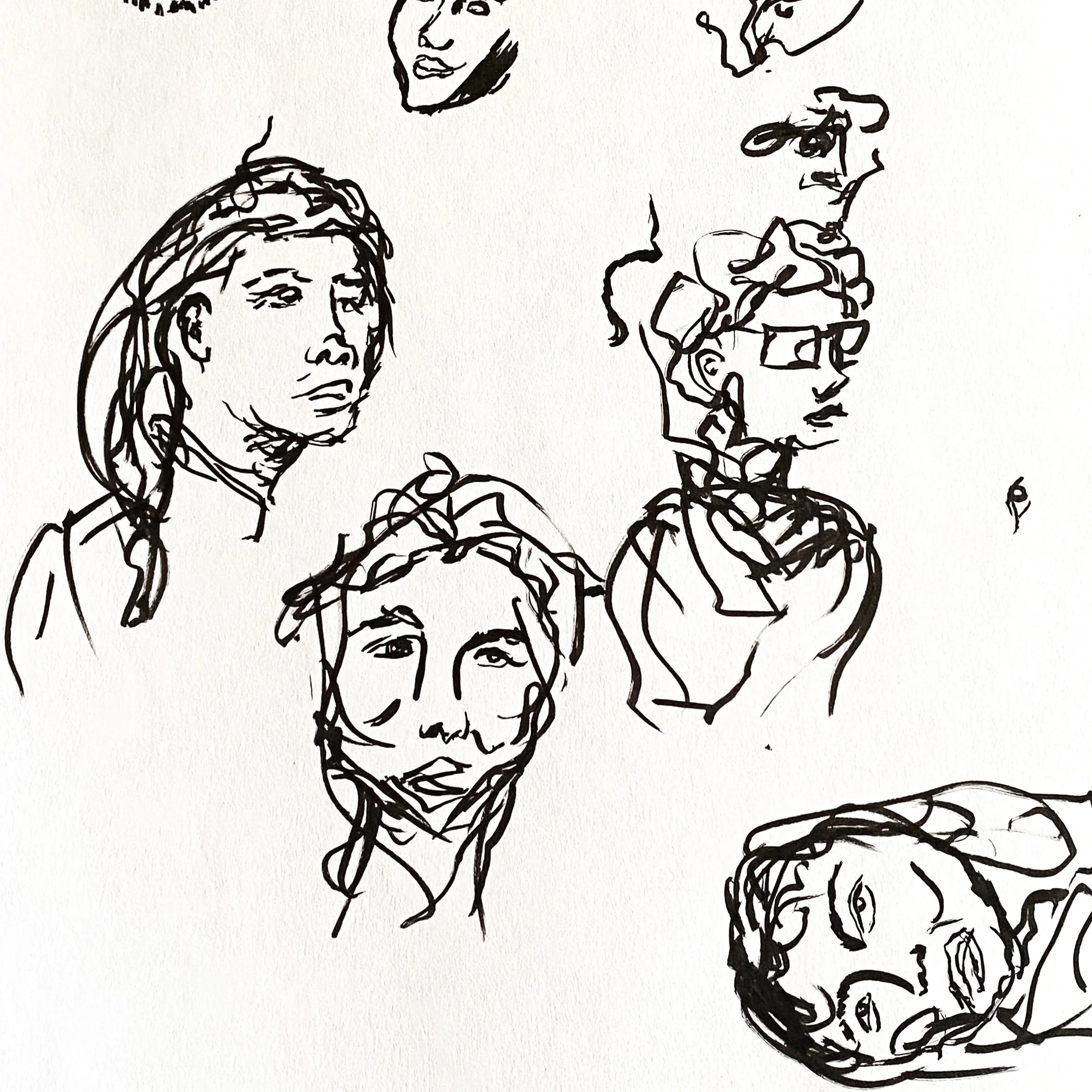Critiques, criticism, and loss of confidence
The other day, as I was sorting through the art I have at home, I came across assignments from my introduction to drawing class, the first studio art class I took in college. As I looked at my drawings, I recalled the feeling of not being good at drawing. I remember the criticism my professor offered during critiques, saying my drawings were in between styles—not quite realistic and never quite whimsical or abstract. I took this to mean I wasn’t skilled enough and my confidence took a hit. I never enjoyed drawing in the same way again and when I did draw, I was overly critical of myself.
Reality is I didn’t know how to interpret criticism.
Chances are you have been asked, “How do you handle criticism?”. I find it to be a funny question. To me, it’s akin to asking “Do you do as you’re told?” or “Do you ascribe such little value to your ideas and work that you change them whenever someone else feels differently?” or “Will you cry if someone points out your shortcomings?”.
Critiques are infamously a cornerstone of art courses. You finish a project and the class gathers around to inspect it and listen to your spiel. Then you stand there in silence as your peers stare at your work and offer observations, questions, advice, and praise. It can be intimidating. Sometimes you’ll get a class full of yes men. They don’t want to hurt your feelings or they don’t know how to give constructive feedback. They applaud anything and everything (I find these infuriating). Other times, you will get so much feedback that it’s hard to digest or the feedback is so blunt and negative that you cry.
Art is meant for an audience. Critiques serve as a test. Hearing other perspectives, especially from people who have more experience, reveals how the piece can be improved. One of the tragedies of being an artist is losing the ability to see your own art objectively. The greater the familiarity, the more dissociation. It’s tempting to be defensive of your artwork during a critique. After all, these people are only seeing a (somewhat) finished product. How can they truly understand all the effort that’s gone into the work? A rule some of my professors had for critiques was that you cannot talk while your work is being critiqued. You just sit there, unarmed.
Instead of fearing critiques, I’ve come to befriend them. They are meant to provide information and a path for growth. The first step in neutralizing critiques was to distance myself from my own work. I noticed I would identify closely with my art, viewing it as an extension of myself. Constructive criticism felt like an ad hominem. Secondly, I stopped viewing every project as a potential magnum opus. I started valuing experimentation and exploration. What does it look like when I use this technique? How can I work outside my comfort zone? If it doesn’t turn out how I had envisioned, that is okay. Thirdly, I began seeing critique as a time when my peers and professors come together to support me in my artistic process. How can I execute my ideas more effectively? What’s working and what’s not working? Just because a piece has been critiqued does not necessarily mean it’s finished. You can apply the feedback or use it as a jumping off point.
Lastly, I discovered the art of filtering criticism. The goal is to balance protecting the value of your own ideas and being open to advice and outside opinions. During one of the first full faculty walkthroughs for senior art projects, I had the epiphany that I don’t have to agree with everyone’s feedback. I was not required to mold my project to fit their opinions. Some responses will be useful—maybe a comment that one person makes engenders another idea or someone mentions an important theory in her area of expertise. It is unlikely that everything will be applicable. There is, however, a pertinent caveat. If the feedback signals the work is lost in translation, it is worth investigating the noise filtered out. Gather data and read between the lines.
To return back to the criticism I received in my drawing class, I can see now that I took the feedback too seriously. I showed a professor a drawing recently and told her I felt insecure because of what the other professor had told me two years prior. Her response: Why listen to what that professor said? It is also apparent that I did not know how to translate the criticism into action. There was a grain of truth in the feedback. I partially did not want to accept that I may not be great at drawing on my first real try. Instead of digging deeper and letting go of my ego’s connection to my work, I remained static in my techniques and well within my comfort zones, which only increased my attachment to my work. I learned to see the worst in my art as a defense mechanism. How could I fear critique if I already knew what I did wrong? This was a bad habit. A few months ago, I was told to stop critiquing mid-process and it changed my whole art practice. Just create and then assess and keep moving.
All this being said, I usually revert to the wise adage from Rick Rubin: make what you love and don’t listen to anyone.
